Click below to view video
Most Christians assume that Becca was somewhere close to Jerusalem, as the Bible speaks of pilgrimage, and the only pilgrimage they think of was to Jerusalem. However, ancient Jews went on pilgrimage to other sites as well. Muslim, on the other hand, associate Becca with Mecca, in Saudi Arabia. Dan Gibson examines the claims, and suggests a new location that fits Muslim and Jewish possibilities.
Transcript
Where was Becca?
Hello, I am Dan Gibson, and welcome to another video in the series Question and Answers. Today’s question is: Where was Becca?
The name Becca appears once and only once in the Bible: Psalm 84 The name Becca appears once and only once in the Qur’an: Sura 3:96 As far as I know, all the other references I found are later explanations of these two mentions of Becca. Traditionally, there are two locations associated with the name Becca.
The first is that Becca is somewhere close to Jerusalem, but the location has never been clearly identified. This interpretation has been accepted by most Jews and Christians.
Second, Muslims understand that Becca is another name for Mecca. This is accepted by most Muslims. Now in this short video, we are going to identify a third location. One that, I think, satisfies both descriptions. So, let’s start with Becca in the Bible. Excuse me if I take a few moments to explain what this Psalm is all about.
Psalm 84: verse 1: To the chief Musician upon Gittith, A psalm for the Sons of Korah.
This is a song. It is to be sung or chanted. ‘Gittith’ is the rhythm or the beat that it is to be sung to. And the description tells us that this song is connected to a group of people known as the Sons of Korah. These were a special group of Levites, or priests who were in change of moving the tabernacle of God from place to place.
Moses was the one who revealed God’s instructions for how the tabernacle or ‘tent of worship’ was to be built. The Hebrew word for tabernacle is different from the Hebrew word for a temple. A tabernacle referred to a movable tent of worship and the word temple was used for a physical stationary building. The temple in Israel was built some 400 years after Moses. So for 400 years a moveable tent was used, rather than a physical building. As I have explained in other YouTube videos, before the time of David and Solomon, the Children of Israel were nomads, living in tents, with a tabernacle, or tent of worship as the focus of their religion.
Moses is the one who designated that the Levites be the ones who were responsible for taking down the tent, moving it, and setting it up again. Korah was a cousin to Moses and Aaron and the descendants of Korah are mentioned in Exodus 6:24. There were three sons, ‘Assir and El-Qanah, and Abi-Awsaph. The descendants of these three men became three tribes, but collectively these three tribes were known as the Sons of Korah.
Now Korah was one of those who rebelled in the wilderness, and was killed there, but his sons survived. (Numbers 26:11) and they were Levites who were the caretakers of the temple. (Numbers 1:50-53)
Now can you imagine their job? When the Children of Israel moved from place to place, during their 40 years of wandering in the wilderness, the Levites had to get up earlier than everyone else so that they could pack up their own tents and belongings. Then after the morning sacrifices, they had to dis-assemble or take apart the entire tabernacle, pack it up, and put it on carts, or put long poles through items so that the items could be carried by four men on their shoulders. They not only had their own things to carry, but they also had to carry all the pillars, curtains, ropes, and paraphernalia of the tabernacle. And I am sure that they were sometimes tempted to complain about the extra work that they had to do, over and above what everyone else had to do. If it had been me, I would have been tempted to complain about all the heavy things that had to be carried from one place to another. Many of them made out of gold or silver or plated with one of those metals.
That is why this psalm is filled with irony. Instead of complaining about the size of the tabernacle, the heavy parts and the extra work, their psalm begins: How lovely is your tabernacle, O LORD of hosts! My soul longs, yes, even faints for the courts of the LORD: My heart and my flesh cry out for the living God.
(So the next time you want to complain about some extra work you have in serving God, remember the Sons of Korah, and their attitude!) They yearned to be at work around the Tabernacle.
The psalm goes on: The sparrow has found a home, and the swallow a nest for herself, Where she may lay her young, even your altars, O LORD of hosts, my King, and my God. Blessed are those that dwell in your house: They will be still praising thee. Selah.
So during one of the longer stays, when they did not move every day, some swallows or birds had built their nests in the tabernacle. And the Sons of Korah have noted that these birds get to live in the tabernacle 24⁄7. And they say: Blessed are those that dwell in your house, or blessed are those that can be in God’s presence 24⁄7.
And then there is a little word, but a very important word: Selah. A key to understanding this psalm is to note this word, Selah.
Selah is used in the Book of Psalms to inform us that the topic is changing. This first section is all about the tabernacle, which had to be moved across the desert during the exodus, and then was set up at Shiloh in Israel. Now, notice something. Selah twlls us that we have ended a topic and we are beginning a totally new topic: that of Becca.
Verse 5
Blessed is the man whose strength is in you (referring to God);
In whose heart are the ways of them.
Who passing through the valley of Baca make it a well; the rain also fills the pools. They go from strength to strength, every one of them in Zion appears before God.
O LORD God of hosts, hear my prayer: give ear, O God of Jacob. Selah.
There are two names here we need to examine. One is Baca, and the second is Zion.
Zion is the name of the place that King David captured in order to create his seat of government. We find this in 2 Samuel 5:7: Nevertheless David took the strong hold of Zion: the same is known as The City of David. Later, this small location would expand to be what we know today as Jerusalem. But initially it was a small fortified place known as David’s city. The word Zion does not appear in the Bible before this.
The next question is: WHEN did this psalm take place? This is foundational to understanding this passage.
- Note the word use here is tabernacle, not temple. This places the passage in an earlier time, BEFORE the construction of Solomon’s temple. The mention of Zion places it AFTER David captures Zion from the Jebusites. There is only a very short period of history when both of these existed at the same time.
- So this is a special period in Israel’s history. David had just taken the fortification of Zion but the tabernacle and the Ark of the Covalent are not in Zion. When the Children of Israel crossed the Jordan from the east, into what would become the Land of Israel, the tabernacle was set up at Gilgal. (Josuah 4) Sometime after that it was moved to Shiloh (Josuah 18)
- During the time that Eli was the High Priest, the Ark of the Covenant was captured by the Philistines. Eventually the Philistines sent the Ark back, but it stayed at a place called Nob (1 Samuel 21). Note that in all of these moves, the Ark of the Covenant was not in the tabernacle. The Tabernacle was still in Shiloh. Later the tabernacle was moved to a place called Gibeon. The sacrifices took place in Gibeon, but the Ark of the Covenant was not there. Note that Zadok was the priest at that time in Gibeon (I Chronicles 16:39-40). Even Solomon went to Gibeon to sacrifice (2 Chronicles 1:3). This was before he built the new temple in Jerusalem, the final location. So let’s review: When was the Psalm written? This Psalm refers to the tabernacle as a mish-kaqin, which is the Hebrew word for the tabernacle, not the temple. So this was before Solomon’s temple was built. It definitely cannot refer to the rebuilding of the temple under Ezra as some have suggested. Ezra 8:15-18 tells us that there were no Levites among those who volunteered to go back to rebuild the temple, and so they searched for and found a handful of them. They are listed and none of them are listed as the Sons of Korah.

TimeLine
We have mention of the Sons of Korah ministering in the tabernacle, or the portable tent that was moved from place to place. As long as the Israelites were nomads, their place of worship was also nomadic. With David and Solomon began the shift from a more nomadic lifestyle to a more settle lifestyle, the tabernacle was replaced with a stationary temple. To understand more of this time period, please see my video & paper on Nomads.
This Psalm also makes reference to Zion, which David conquered, and where the Ark of the Covenant was located before the temple was built. As I said, for quite a number of years, the Ark was in a different place than the tabernacle. This separation started during the time of Eli the High Priest, then through Samuel’s time. During this time the ark was captured by the Philistines, and it was never returned to the tabernacle or the tent of worship. It was only after Solomon’s temple was built that the ark was united with the temple.
This Psalm is speaking of the time when the Ark was in Zion, in a tent that David put up for it. But the actual tabernacle, the Tent of Worship with the inner holy places, was still in Gibeon. One of the great religious acts that David carried out was to arrange to have the ark transported to Zion. Once it arrived it was placed in a tent that David built. The Hebrew word here is ‘o-hel or tent. This was not the tabernacle. That was still in Gibeon, and people went to Gibeon to make offerings there… until the temple was built.
So this Psalm may very well have been written by David for the Sons of Korah to sing in the new temple that his son Solomon would build. David gathered together much of the materials for that temple, so it would be no surprise if he arranged for some of the songs that would be sung there. But it was David’s son Solomon who actually built the temple.
I realize that this is confusing to some people. But we need to understand the background to Palm 84 for it is in this setting that the psalm makes reference to Becca. In the second section it says:
Selah. Blessed is the man whose strength is in you (referring to God);
In whose heart are the ways of them.
Who passing through the valley of Baca make it a well; the rain also fills the pools. They go from strength to strength, every one of them in Zion appears before God.
O LORD God of hosts, hear my prayer: give ear, O God of Jacob. Selah.
- We know about Zion where the Ark was located.
- We know about Gibeon where the Tent of Worship was located.
- So what is the mention of the Valley of Becca? Because they are mentioned together in the same verses that mention Zion many people to assume that Becca was a place close to Zion or Jerusalem. And this is the traditional interpretation.
SECOND IDEA
The second place we find the name Becca, is in the Qur’an in Sura 3: 95-96
Allah speaks truth. So follow the religion of Abraham, the upright. He was not of the idolaters. Behold, the first Sanctuary appointed for mankind was that at Bakka, a blessed place, a guidance to the peoples; Wherein are obvious signs such as the place where Abraham stood up to pray; Whoever enters it is safe. And pilgrimage to this House is a duty unto Allah for mankind.
Barbara Ann Kipfer in the Encyclopedic Dictionary of Archaeology (2000) tells us that this is Mecca. (Barbara Ann Kipfer, Encyclopedic Dictionary of Archaeology (2000) Springer. p. 342) And all down through history, Muslims have associated Becca with Mecca. They believe that it was in Mecca that Abraham exiled Hagar and her son Ishmael. They believe that later Abraham returned, after building a place of worship specifically for Isaac and his descendants in Bethel, returned to Mecca and built a place of worship for Ishmael and the rest of the descendants of Abraham. And indeed this verse in the Qur’an tells us that the “first Sanctuary appointed for all of mankind was that at Bakka” and relates it to Abraham.
And so Muslims today place Becca in Saudi Arabia.
So we have two options. Some place Becca near Jerusalem, or some place Becca near Mecca in Saudi Arabia.
THIRD IDEA
In this video, I would like to suggest a third location. I will suggest that both of these descriptions can be combined together.
As most of you will know, I have been promoting the idea that the original holy city of Islam was located in the city of Petra in Southern Jordan. If you have not heard this before, I suggest you follow the video series Archeology and Islam. You can find these videos here on this channel, and also on the website Nabataea.net where they are all presented, in order. Basically, during my studies of early Islamic Qiblas, I discovered that all of the first mosques faced towards the city that is known today to us as Petra, in southern Jordan. I also found Islamic histories and Hadiths that seemed to support this idea.
Then one day I discovered that Azraqi, an early Islamic historian wrote down the measurements of the Ka’ba that existed when Muhammad was alive. Those measurements do not match the Ka’ba in Mecca, but they match the measurements of a rectangular foundation in Petra, right in the middle of the city. After further study and consideration, I now believe that that foundation is the foundation of the first Ka’ba, and that was there during the time of the prophet Muhammad and during the time of the first four rightly guided Caliphs, who all lived in the city of Petra.
And I believe that the great mountain behind Petra had several names. To the Christians it was known as Mount Hor and there is evidence that they made pilgrimage to the top of Mount Hor to stand and worship God at the Tomb of Aaron. Today there are ruins of building that were there for the pilgrims. I also believe that the same mountain was also referred to as Jebal Arafah by the new Muslim community, and that they also made pilgrimage to that same mountain. Near the top of the mountain was a very large flat place that fit the descriptions of the Plains of Arafah, where pilgrims could gather, face the setting sun, and worship God.
That is nothing new for people who have been carefully watching these videos. If you want to check this out for yourself, look for the video on the Petra Pilgrimage.
I have also pointed out that one of the names of the first city of Islam was Mecca which was in the Paran desert. And that this fits the Petra location. And we noted that several historians in the 8th and 9th centuries claim that Mecca, The Mecca, was in Paran, in Arabia Petrea.
We also located Abraham in the Petra Valley. Long before it was a city, the valley was empty, and it was there that Abraham exiled Hagar and Ishmael, and later then he returned to build an altar so that they too could worship the one true God. I place this all in the valley where Petra was later built.
And so, if Mecca was located here, then Becca would also be located here, not in Saudi Arabia. So does Becca, if it was in Southern Jordan, fit the Biblical narrative? Let’s go back to the Bible.
In Psalm 84 it says: Who passing through the valley of Baca make it a well; the rain also fills the pools Why would the Jewish people in Israel, want to go to Petra? This was before Petra was ever built. Wouldn’t they go on pilgrimage to the tombs of the patriarchs in Israel? There is one location that is famous today, known as the tombs of the Patriarchs.
However, the first mention of Jewish people going there for pilgrimage is not until 31 BC, when the Jewish King Herod the Great built a large, rectangular enclosure over the cave to commemorate the site for his subjects. It is the only fully surviving Herodian structure. Herod’s building had 6-foot-thick stone walls made from stones that were at least a meter, (around 3 feet) tall and sometimes reach a length of 24 feet or over 7 meters. The structure did not have a roof, and no one has ever located a door. It is as if Herod built a large monument, but in doing so sealed it so no one could get close to the tombs.
Nancy Miller (May–June 1985). “Patriarchal Burial Site Explored for First Time in 700 Years”. Biblical Archaeology Society. Archived from the original on 30 November 2018. Retrieved 30 November 2018.
Back in the time of David when this Psalm was written there was no memorial that we know of at that location. But there was a tomb where Aaron was buried.
Numbers 20:23 - 29 says: And the LORD spoke unto Moses and Aaron in mount Hor, by the border of the land of Edom, saying, Aaron shall die and be gathered unto his ancestors: for he shall not enter into the land which I have given unto the Children of Israel, because he rebelled against my word at the water of Meribah. So take Aaron and Eleazar his son, and bring them up onto Mount Hor: And strip Aaron of his holy garments, and put them upon Eleazar his son: and Aaron shall be gathered unto his people, and shall die there. And Moses did as the LORD commanded: and they went up into Mount Hor in the sight of all the congregation. And Moses stripped Aaron of his garments, and put them upon Eleazar his son; and Aaron died there at the top of the mount: and Moses and Eleazar came down from the mount. And when all the congregation saw that Aaron was dead, they mourned for Aaron thirty days, even all the house of Israel.
To get to Mount Hor, or Jebal Haroun as it is called today, one must pass through the Petra Valley.
The tomb of Aaron is on the south-west side of Petra at the top of the mountain. And it has been a place of pilgrimage going far back into history. However, because it was under Edomite control, it was inaccessible to the Jews until David conquered the area. This is exactly the time when this Psalm was written. Can you imagine how excited the Jewish people were… especially the priests, who could now go and visit the Tomb of Aaron, who was the first High Priest of Israel? And just before these pilgrims got there, they would pass through a valley where tradition tells us that Abraham built an altar for Ishmael and his descendants. A desert valley called Becca. The place of weeping. Where Hagar wept, thinking her child would die. Where the only water available came from rainwater that was collected into pools or from a well that would be dug.
This all fits the location of Petra, before the Nabataeans built their city there, and it fits the Biblical description of Becca. If Petra is the Holy City of Islam, known as Mecca, located in Paran, then the description of it being also called Becca, a place of pilgrimage fits both the Biblical and the Islamic descriptions.
By combining the Biblical records with the Islamic ones, we get a picture of a desert valley… where Hagar and Ishmael were left. Later Abraham returns to them and builds an altar for Ishmael and the rest of his descendants to worship God. They live there, and Hagar arranges and Egyptian woman to be the wife of Ishmael. As I describe in the book: Qur’anic Geography, once Jacob and his family and descendants are in Egypt, the rest of Abraham’s descendants, … as described here in this Chart of the Nations … combine forces )a federation of tribes) and overwhelm a great part of the Middle East.
The Qur’an calls these the people of ‘Ad. The Bible mentions them living as living in the land of ‘Uz. The Egyptians call them the Shasu. In any case they have their day, but eventually the Egyptians crush them, and the once powerful federation of tribes splits up, and all that is left are smaller tribes and groups. Archeology shows all of these small nations emerging about the same time. Edom is one of these tribes, and they occupied the area of Mount Seir and Mount Hor. A few years later when Moses leads the Children of Israel out of Egypt, they eventually bury Aaron on the top of Mount Hor, known today as Mount Heroun or the Mount of Aaron. Only two men, Joshua and Caleb survive the wanderings in the wilderness, and it is the children and grandchildren of the Jews who started the Exodus, who finally enter into the land of Canaan.
Then the Jews take 400 years to slowly take over the land, all that time mostly living in tents, and herding animals, while they conquer and destroy city by city. Eventually David becomes King, and he conquers all the way up into Syria, and down south as far as the Red Sea.
And when he takes the land of Edom, pilgrimage to Aaron’s tomb suddenly becomes possible. And thus the priests and Levites can now take pilgrimage to Aaron’s tomb, and anybody else can go. That tomb is important, as the body of Moses was never found. There was no tomb for Moses. The Bible says that God took him, and no one ever found his body. So without a tomb for Moses, the next important person was the tomb of Aaron. And the Levites would be needed to take care of the tomb and manage the pilgrims, who, on their way, they would need to pass through the valley of Becca, and see and remember the time Abraham was there.
I think it all fits. Becca is associated with Mecca in Islam. Becca is associated with a dry barren valley that the Jews would need to pass through; and where Abraham had built an altar for Ishmael. That altar eventually is rebuilt, and becomes the Ka’ba, a place of worship for the early Arabs, and the catalyst around which Islam forms.
Can I prove this?
So far we only have one reference in the Bible, and one reference in the Qur’an, and some suggestions of Muslim, Jewish and Christian writers who write many years later. For me it all fits, but each of you will have to decide for yourselves.
I am Dan Gibson, and this has been another video in the Question and Answer Series.
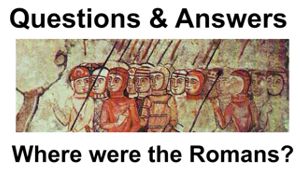
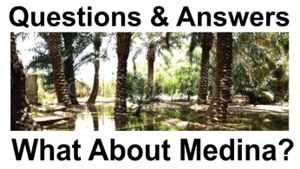
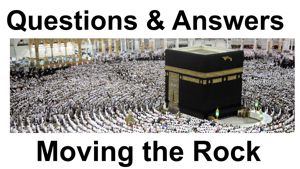
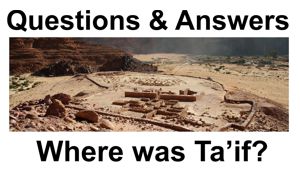
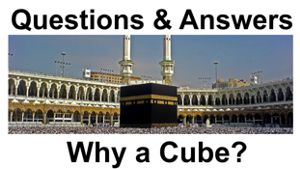
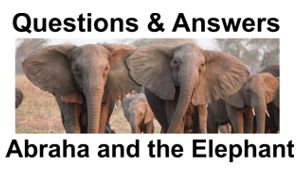
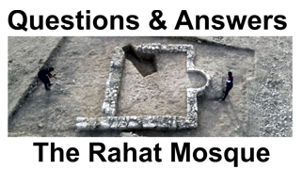
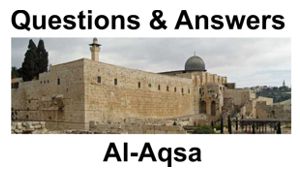
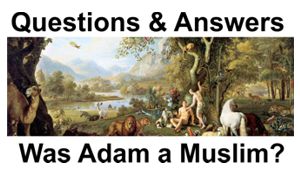
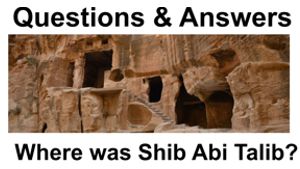
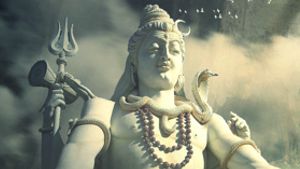
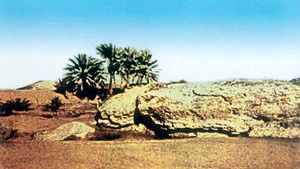
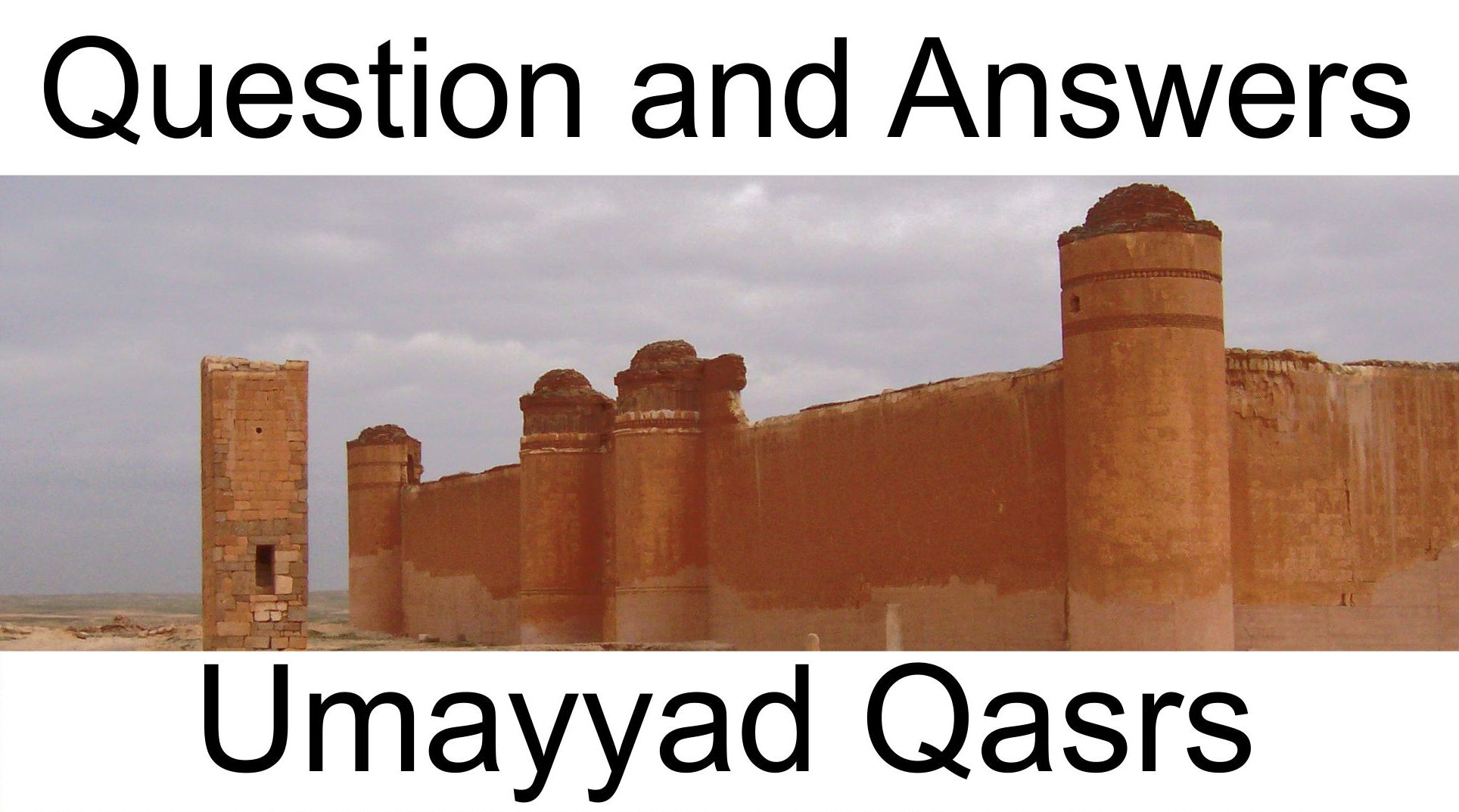
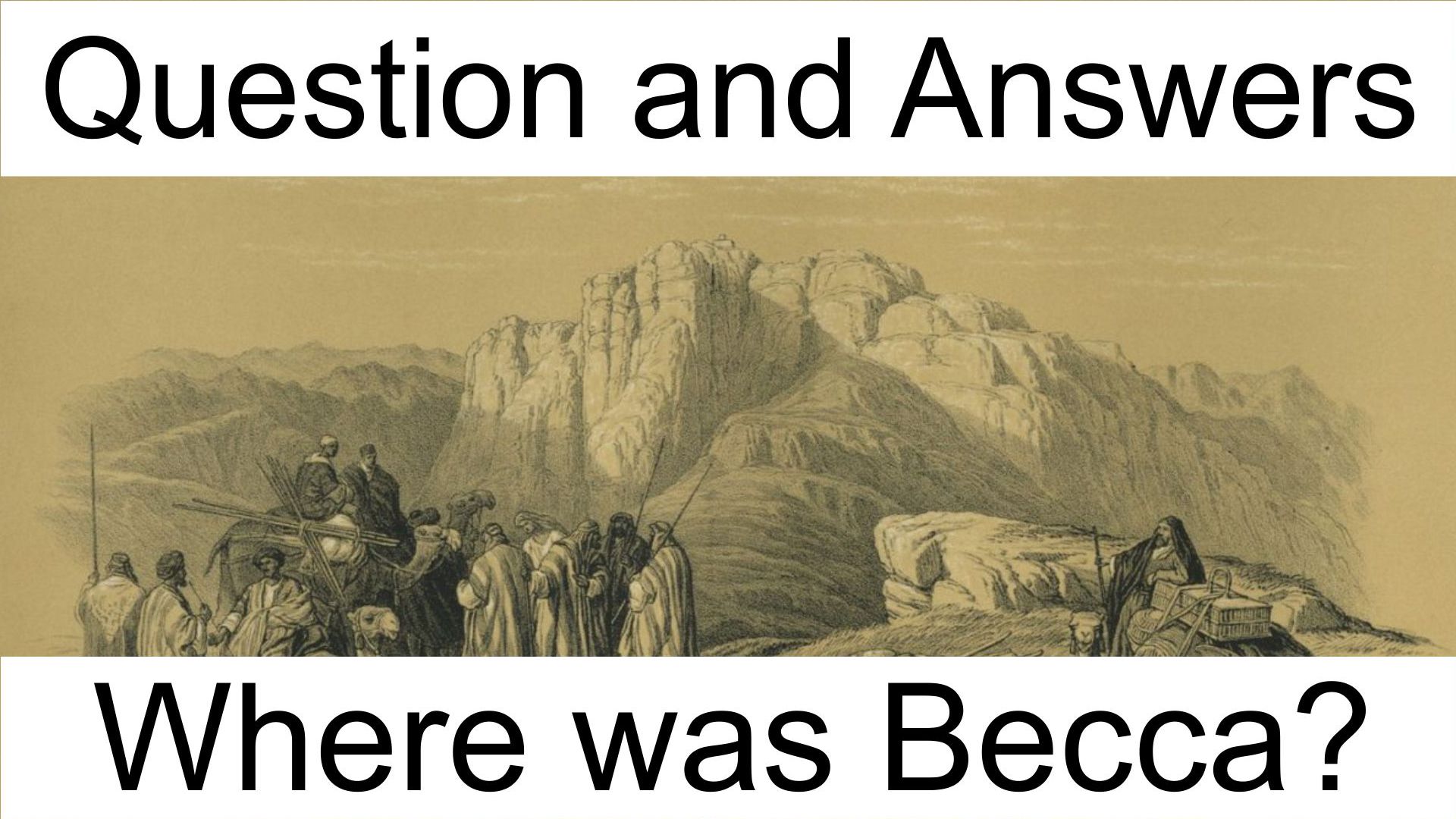
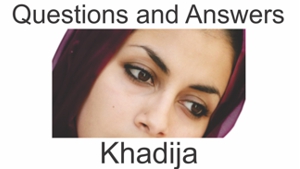
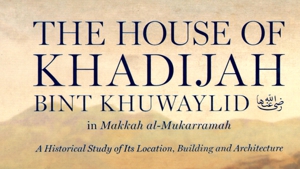
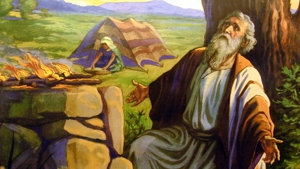
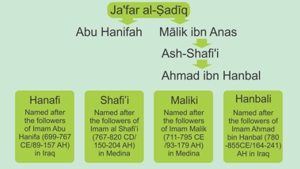

Page Discussion
Membership is required to comment. Membership is free of charge and available to everyone over the age of 16. Just click SignUp, or make a comment below. You will need a user name and a password. The system will automatically send a code to your email address. It should arrive in a few minutes. Enter the code, and you are finished.
Members who post adverts or use inappropriate language or make disrespectful comments will have their membership removed and be barred from the site. By becoming a member you agree to our Terms of Use and our Privacy, Cookies & Ad Policies. Remember that we will never, under any circumstances, sell or give your email address or private information to anyone unless required by law. Please keep your comments on topic. Thanks!